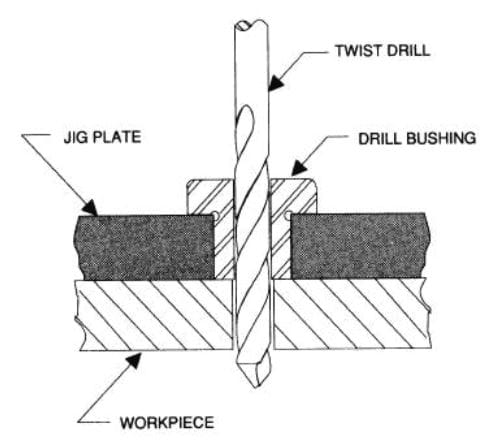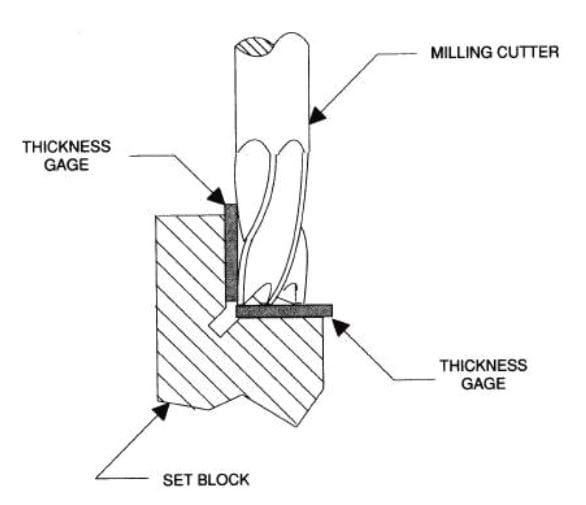Jig & Fixture Definitions
Carr Lane Mfg. is one of the world's most trusted providers of workholding devices, including jigs & fixtures. Workholding describes any part that is used to securely and firmly hold a workpiece in place. This is done with a tolerance to resist machine forces as to not deform the part.
Some of the terms commonly used to refer to our products include "jigs" and fixtures." Often, these terms are confused and used interchangeably. However, there are distinctions between jigs and fixtures.
Although many people have their own definitions for a jig or fixture, there is one universal distinction between the two. Both jigs and fixtures hold, support, and locate the workpiece. Learn the difference between a jig and fixture in this guide from the experts at Carr Lane Mfg.
What Is The Difference Between A Jig & A Fixture?
While similar, jigs and fixtures maintain two distinct jobs. Jigs are used to guide the cutting tool, while a fixture references the cutting tool. The differentiation between these types of workholders is in their relation to the cutting tool.
Jigs use drill bushings to support and guide the tool. Fixtures use set blocks and thickness, or feeler gages, to locate the tool relative to the workpiece.

Figure 1-1. Jigs used with a drill bushing

Figure 1-2. A fixture mounted with a set block
What Are Jigs in Workholding?
The most common types of jigs are drill and boring jigs. These tools are fundamentally the same. The difference lies in the size, type, and placement of the drill bushings. Boring jigs usually have larger bushings.
These bushings may also have internal oil grooves to keep the boring bar lubricated. Often, boring jigs use more than one bushing to support the boring bar throughout the machining cycle.
In the shop, drill jigs are the most utilized form of jig. Drill jigs are used for drilling, tapping, reaming, chamfering, counterboring, countersinking, and similar operations.
Jigs are further identified by their basic construction. The two common forms of jigs are open and closed. Open jigs carry out operations on only one, or sometimes two, sides of a workpiece. Closed jigs, on the other hand, operate on two or more sides.
The most common open jigs are template jigs, plate jigs, table jigs, sandwich jigs, and angle plate jigs. Typical examples of closed jigs include box jigs, channel jigs, and leaf jigs. Other forms of jigs rely more on the application of the tool than on their construction for their identity.
Specialized industry applications have led to the development of specialized drill jigs. For example, the need to drill precisely located rivet holes in aircraft fuselages and wings led to the design of large jigs. These jigs come with bushings and liners installed, contoured to the surface of the aircraft. A portable air-feed drill with a bushing attached to its nose inserted through the liner in the jig and drilling is accomplished in each location.
What Are Workholding Fixtures?
Fixtures have a much wider scope of application than jigs. These workholders are designed for applications where the cutting tools cannot be guided as easily as a drill. With fixtures, an edge finder, center, finder, or gage blocks position to the cutter.
Examples of common fixtures include milling fixtures, lathe fixtures, sawing fixtures, grinding fixtures, and permanently attached fixtures. A fixture can be used in almost any operation that requires a precise relationship in the position of a tool to a workpiece.
Fixtures are most often identified by the machine tool where they are used. Examples include mill fixtures or lathe fixtures. But the function of the fixture and/or basic construction of the tool can also identify a fixture type.
Although a tool can be called a mill fixture it could also be further defined as a straddle-milling, plate-type mill fixture. A lathe fixture could also be defined as a radius-turning, angle-plate lathe fixture.
Tool or Tooling
The term "tool" encompasses both jigs and fixtures. Essentially, it is a generic term describing a workholder, which is identified with a part or machine. Sometimes "tool" is used to refer to a cutting tool or a machine tool, so it is important to make clear distinctions.
Workholders is a broad term that refers to both jigs and fixtures. A workholder is any device which holds, supports, and locates a workpiece.
Common examples of workholders include toggle clamps, locators, manual clamps, power clamps and vises. Carr Lane offers workholding options to meet any production need.
A quality workholding solution has easily repeatable setup processes while some CNC machines have workholding parts built in. The goal of workholders is to significantly reduce the need for changeovers, increasing production times.
This page contains information originally published in the Jig & Fixture Handbook, 3rd Edition, Copyright 2016, Carr Lane Manufacturing Co., St. Louis, Mo.